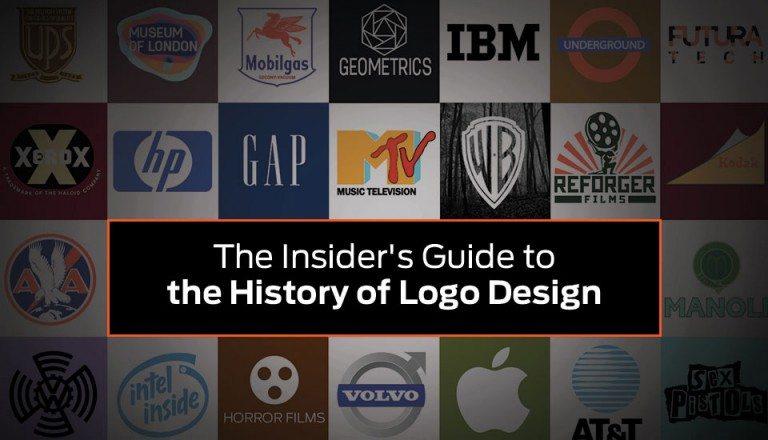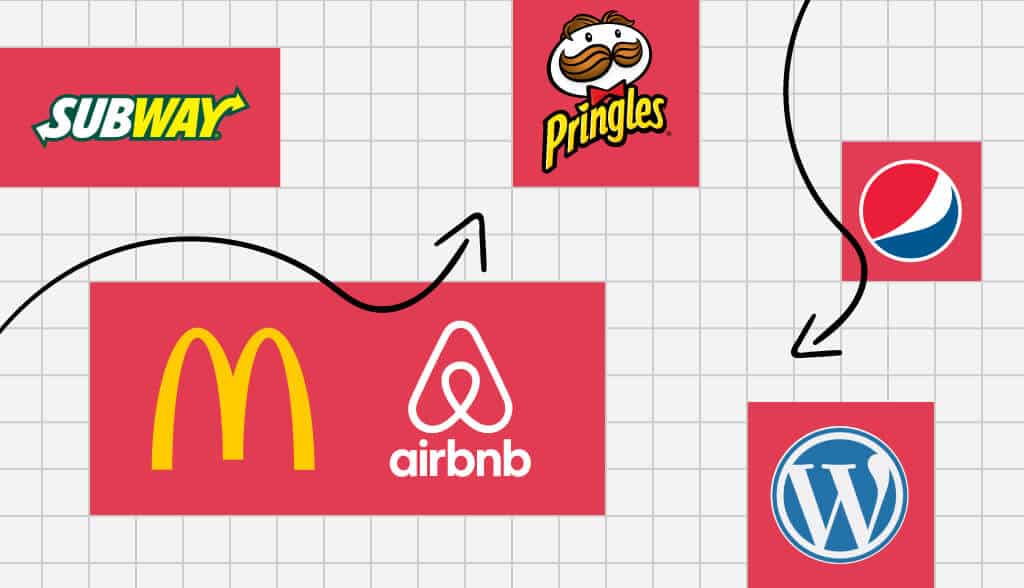
From the ancient hieroglyphics of Egypt to the modern minimalist designs of today, logo evolution has been a wild ride. Strap in as we take a iconic-logo-histories/” title=”Brand Evolution: Iconic Logo Histories”>journey through time, uncovering the bizarre, iconic, and downright questionable logos that have shaped our world. Grab your time machine and let’s dive into the wacky and wonderful world of logo design!
Early Logos in Antiquity
During the ancient times, logos weren’t just something you slapped on a t-shirt to make it look cool. No sir, logos were a symbol of power, prestige, and identity. Let’s take a trip down memory lane and explore some examples of that were so iconic, they deserve their own Hollywood star.
First up, we have the legendary Eye of Horus from ancient Egypt. This logo was the OG all-seeing eye, watching over the people and protecting them from harm. It was so popular, it even made its way onto the walls of tombs and temples. Talk about brand loyalty!
Next, let’s fast forward to ancient Greece, where the Nike swoosh of its time was the famous Medusa head. With snakes for hair and a gaze that could turn you to stone, this logo was not to be messed with. It was the perfect symbol of strength and intimidation – just what you want in a good logo.
And finally, we can’t forget about the Roman Empire and their iconic SPQR logo. Standing for Senatus Populusque Romanus (the Senate and People of Rome), this logo was the epitome of patriotism. It was everywhere – on coins, buildings, and even the armor of Roman soldiers. Now that’s what I call branding!
The Rise of Heraldry in the Middle Ages
In the Middle Ages, it seems like everyone and their cousin suddenly decided to don a coat of arms and show off their family history. Heraldry was all the rage, and knights were spending more time designing their shields than actually fighting battles.
Imagine walking down the street and being bombarded with a sea of colorful shields and crests, each one trying to outdo the other in terms of elaborate design. It was like a medieval fashion show, except instead of designer clothes, it was all about lions, dragons, and rampant unicorns.
Knights would spend hours debating the symbolism behind their chosen emblems, arguing over whether a red lion represented strength or cowardice. It was like a never-ending episode of Game of Thrones, only with more intricate patterns and less bloodshed.
And let’s not forget the heralds, those poor souls who had to memorize hundreds of different coats of arms and their accompanying mottos. Talk about a brain workout! It’s a wonder they didn’t all go cross-eyed trying to keep track of who had a rampant lion versus a passant lion.

Industrial Revolution and the Birth of Modern Branding
During the Industrial Revolution, the world was introduced to a whole new way of doing things. Factories were churning out products faster than ever before, and people suddenly had access to goods they never knew they needed. It was in this chaotic time that modern branding was born, and boy, did it make a splash!
Brands were no longer just names slapped on products – they were now symbols of quality, reliability, and sometimes, pure extravagance. Companies saw the value in standing out from the competition and started coming up with catchy slogans, colorful logos, and even mascots to help sell their wares. It was like a marketing free-for-all, and consumers were eating it up!
Imagine walking down the street and seeing a billboard for the latest “miracle tonic” that promised to cure all your ailments. Or flipping through a newspaper and seeing an ad for the newest “must-have” gadget that would revolutionize your life. These were the types of tactics that brands were using to capture the attention of the masses, and let me tell you, they were certainly effective!
Before you knew it, every household had their favorite brand of soap, soda, and even shoes. People were starting to associate themselves with certain brands, almost like they were a part of a secret club. It was the birth of modern branding, and the world would never be the same again!

Art Deco and the Golden Age of Logos
During the 1920s and 1930s, the Art Deco movement was in full swing and it left its mark on everything from architecture to fashion. But one of the most iconic representations of this era was the logos that emerged during this period. Brands went all out with bold, geometric designs that exuded luxury and sophistication.
Just imagine, walking down the street in the Golden Age of Logos, and being greeted by majestic emblems that screamed opulence. From sleek, streamlined lettering to intricate patterns and motifs, these logos were a sight to behold. They were like little pieces of art that you could carry around with you wherever you went.
Not only were Art Deco logos visually stunning, but they also carried a sense of prestige and glamour. These logos were like the celebrities of the marketing world, demanding attention and admiration wherever they appeared. They were the ultimate status symbols, showing off a brand’s wealth and sophistication in the most extravagant way possible.
So, the next time you come across a vintage Art Deco logo, take a moment to appreciate the elegance and grandeur of the Golden Age of Logos. These iconic designs have stood the test of time and continue to inspire designers to this day. Long live Art Deco!

Corporate Identity in the Digital Age
As we navigate the wild world of , it’s important to remember that we’re no longer just a logo on a business card. We’re a powerful force in the online realm, shaping perceptions and influencing trends with every post, tweet, and meme we release into the digital ether.
One key aspect of maintaining a strong is consistency. Whether it’s our website, social media profiles, or email marketing campaigns, we must ensure that our brand message remains crystal clear and unwavering. Think of it as the digital version of always wearing your lucky socks to a big meeting – you wouldn’t want to jinx yourself by sending mixed signals, would you?
Another crucial element in this digital age is staying relevant. Just like that old high school friend who still talks about that one touchdown they scored junior year, outdated content or design choices can make us seem out of touch and, dare I say it, uncool. We must constantly evolve and adapt to the ever-changing landscape of the online world, always on the lookout for the next big trend or viral sensation to jump on.
And finally, let’s not forget the power of storytelling in crafting a memorable corporate identity. In a sea of bland copy and forgettable brand messages, a compelling narrative can set us apart from the competition and create a lasting connection with our audience. So, dear fellow digital identity warriors, let’s embrace the challenges and opportunities of this brave new world and forge ahead with boldness, creativity, and a dash of humor.
Minimalism and the Evolution of Logo Design
In the ever-evolving world of design, the concept of minimalism has taken the logo design industry by storm. Gone are the days of busy, cluttered logos – simplicity is key! This shift towards minimalism has completely transformed the way logos are created and perceived.
One of the main reasons behind this evolution is the rise of technology. With the advent of digital platforms, logos need to be easily recognizable on a variety of devices and screen sizes. Minimalist logos with clean lines and simplicity stand out even on the smallest of screens. Plus, they look pretty darn cool!
So, what exactly makes a logo minimalist? Well, think of iconic logos like Apple or Nike – simple, sleek, and instantly recognizable. Minimalist logos often feature:
- Clean lines and shapes
- Subtle color palettes
- Negative space
Overall, the evolution of logo design towards minimalism has been a breath of fresh air in the design world. It’s all about less is more – less clutter, more impact. So, next time you’re designing a logo, remember that sometimes, simplicity truly is the key to making a lasting impression!
From 2D to 3D: Logo Design in the Digital Era
In this digital age, logo design has transformed from flat and 2D to interactive and eye-catching 3D masterpieces. Gone are the days of basic shapes and colors – now, logos are popping off the screen and grabbing your attention in ways you never thought possible.
With the power of technology at our fingertips, designers are able to bring logos to life in ways that were previously unimaginable. From dynamic animations to sleek transitions, the possibilities are endless when it comes to creating a memorable and engaging logo in the digital era.
Imagine a logo that not only looks great on a computer screen but also jumps out at you in virtual reality. The future of logo design is bright, bold, and three-dimensional. Who knew that a simple logo could become a work of art that draws you in and keeps you hooked?
So wave goodbye to boring 2D logos and say hello to the exciting world of 3D design. It’s time to step up your branding game and embrace the power of digital innovation. Your logo deserves to stand out in a sea of competition, so why not let it shine in all its three-dimensional glory? Get ready to make a statement and leave a lasting impression with a logo that pops like never before.
FAQs
Who were some of the earliest precursors to modern logo design?
Ah, back in the day, the ancient Romans and Greeks were the trendsetters in logo design. They used images and symbols on coins to showcase power and authority.
When did logo design start to become more recognizable to modern standards?
It wasn’t until the Middle Ages that logo design started to take shape as we know it today. Merchants began using unique symbols to differentiate their products and services.
How did the Industrial Revolution impact logo design?
The Industrial Revolution brought about mass production and global trade, paving the way for companies like Coca-Cola and Ford to create iconic logos that are still recognized today.
What role did technology play in the evolution of logo design?
With the invention of the printing press, logos became more detailed and intricate. The rise of computers later allowed for even more creativity and possibilities in logo design.
What are some modern logo design trends we see today?
Nowadays, simplicity is key in logo design. Minimalist logos like Apple and Nike are all the rage. Plus, there’s a growing trend in creating dynamic and interactive logos for the digital age.
And that’s a wrap on the wild ride of logo design evolution!
From simple lettermarks to complex, multi-dimensional symbols, the world of logos has certainly come a long way. Who would have thought that a simple image or word could carry such significance and meaning? Whether you prefer the classic simplicity of the past or the bold creativity of the present, one thing is for sure – logos will continue to evolve and surprise us with their ingenuity. So next time you see a logo, take a moment to appreciate the history and thought behind it. Who knows, maybe you’ll even be inspired to create your own iconic symbol!












